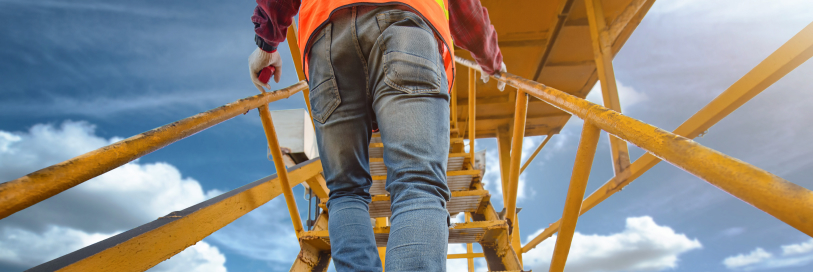Construction Accident Lawyer in Columbia, SC

Construction sites are typically more hazardous than other workplaces, but this does not mean that site operators can ignore safety requirements or cut corners when it comes to keeping workers and bystanders safe. Construction sites are full of potential hazards, and when accidents happen, the consequences can be catastrophic.
It is important to understand that if you’ve been injured at a work site, either while on the job or simply while passing through the area, you could be entitled to compensation for a variety of related losses, including medical bills and lost wages. Working with a Columbia construction accident lawyer at the Law Offices of S. Chris Davis can help you to secure this rightful compensation. Our firm is committed to providing courteous, competent, and professional legal service to injury clients in South Carolina’s capital city and throughout the state. Attorney Chris Davis has been named to National Trial Lawyers Association’s “Top 40 Under 40” list for several consecutive years, so you can rest assured that when you choose to work with our firm, your case will rest in capable hands.
If you have been injured in an accident on a construction site, turn to the Law Offices of S. Chris Davis for help. We look forward to meeting you during a free, no-obligation consultation and learning about your unique experience and concerns.
Common Types and Causes of Construction Accidents in Columbia
Some of the most frequent types of construction accidents that occur in Columbia include:
- Slip-and-fall or trip-and-fall accidents
- Motor vehicle accidents
- Scaffolding accidents, including scaffolding collapses and accidents involving falling objects
- Ladder accidents
- Falls from heights, including from roofs and open holes in the floor or ground
- Crane accidents, including crane collapses and dropped cargo loads
- Forklift accidents, including rollover accidents, crush accidents, and impalement accidents
- Equipment/tool accidents, including entanglements and accidental amputations
- Electrocutions
- Fires and explosions
- Trench or building collapses
- Chemical spills and exposures
Common causes of constructions accidents include:
- Careless operation of motor vehicles or motorized equipment
- Exposed electrical wires and power lines
- Unsafe storage of flammable or toxic chemicals and materials
- Failure to reinforce unstable trenches, building walls, and support columns
- Defectively designed or manufactured tools and equipment
- Removed or disabled safety features for equipment
- Inadequate worker training
- Permitting uncertified workers to use dangerous equipment
- Poor maintenance of vehicles, equipment, machinery, and tools
- Lack of supervision and enforcement of safety protocols
- Violations of OSHA safety regulations
- Lack of fall protection equipment
- Lack of appropriate safety equipment, including eye protection, hardhats, and harnesses
- Defectively erected scaffolding or cranes
- Negligent excavation of trenches or basements
- Failure to secure objects stored on scaffolding or roofs
- Failure to pause work during adverse weather, including when lightning and high winds, extreme heat, or extreme cold is affecting the safety of a job site
Common Injuries Resulting from Construction Accidents
The dangerous equipment and materials regularly found on construction sites can cause construction workers and innocent bystanders to become injured. Some of the most common examples of construction accident injuries include:
- Lacerations and excessive bleeding
- Abrasions and avulsions
- Burns, including both thermal burns and chemical burns
- Smoke inhalation injuries
- Degloving injuries, or injuries in which the skin is torn away from underlying muscle and bone
- Electrocution injuries
- Toxic exposure
- Broken bones
- Ligament sprains and tears
- Muscle and tendon strains and tears
- Dislocated joints
- Nerve damage
- Crush injuries
- Perforation injuries
- Internal organ injuries and internal bleeding
- Whiplash
- Overexertion
- Repetitive stress injuries
- Heat stroke or frostbite/hypothermia
- Facial injuries
- Vision or hearing loss
- Traumatic brain injuries
- Amputation, or loss of body parts/bodily function
